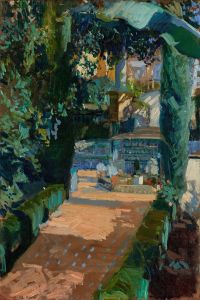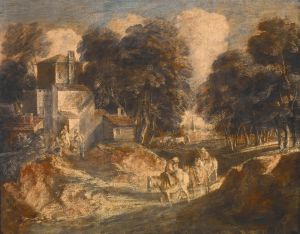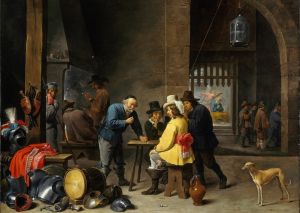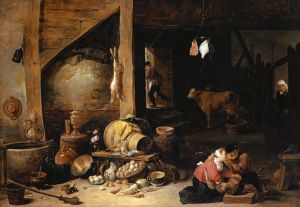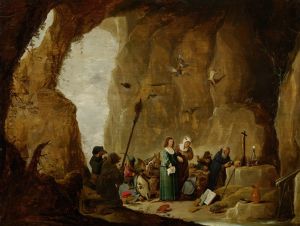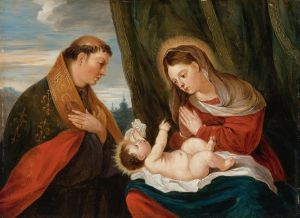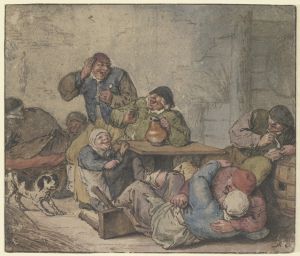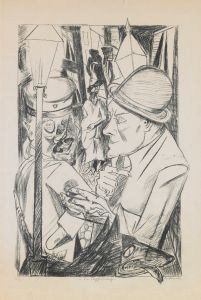
Peasant Kermis
A hand-painted replica of David Teniers The Younger’s masterpiece Peasant Kermis, meticulously crafted by professional artists to capture the true essence of the original. Each piece is created with museum-quality canvas and rare mineral pigments, carefully painted by experienced artists with delicate brushstrokes and rich, layered colors to perfectly recreate the texture of the original artwork. Unlike machine-printed reproductions, this hand-painted version brings the painting to life, infused with the artist’s emotions and skill in every stroke. Whether for personal collection or home decoration, it instantly elevates the artistic atmosphere of any space.
David Teniers the Younger, a prominent Flemish Baroque painter, is well-known for his genre scenes, particularly those depicting peasant life. One of his notable works in this genre is "Peasant Kermis." This painting exemplifies Teniers' ability to capture the vibrancy and dynamism of rural festivities, a theme that was popular in Flemish art during the 17th century.
"Peasant Kermis" portrays a lively village festival, a common subject in Teniers' oeuvre. The term "kermis" refers to a traditional fair or festival, often associated with a church's patron saint's feast day, which was a significant social event in rural communities. These gatherings were characterized by music, dancing, eating, and various forms of entertainment, providing a rich tapestry of human interaction for artists to explore.
In this painting, Teniers skillfully arranges a multitude of figures engaged in various activities, creating a bustling scene that draws the viewer into the heart of the celebration. The composition is typically crowded, with peasants dancing, musicians playing instruments, and vendors selling their goods. Teniers' attention to detail is evident in the depiction of the figures' clothing, expressions, and gestures, which convey a sense of joy and revelry.
The setting of "Peasant Kermis" is usually an open-air space, possibly a village square or a field, with rustic buildings or a church in the background. This setting not only provides context for the festival but also emphasizes the connection between the community and its environment. Teniers often included elements of the landscape to enhance the narrative and provide a sense of place.
Teniers' use of color and light in "Peasant Kermis" is noteworthy. He employs a warm palette, with earthy tones dominating the scene, reflecting the natural surroundings and the simplicity of peasant life. The play of light and shadow adds depth and dimension to the painting, highlighting certain figures and activities while creating a sense of movement and energy.
As with many of Teniers' works, "Peasant Kermis" is not just a depiction of a rural festival but also a reflection of the social and cultural dynamics of the time. The painting offers insights into the customs and traditions of 17th-century Flemish society, as well as the artist's perspective on the human condition. Teniers' ability to capture the essence of peasant life with humor and empathy has contributed to his enduring reputation as a master of genre painting.
David Teniers the Younger's "Peasant Kermis" remains a valuable piece of art history, illustrating the vibrancy of rural life and the skill of an artist who could transform everyday scenes into engaging and meaningful works of art. Through his detailed and lively portrayal of a peasant festival, Teniers invites viewers to step into a world of celebration and community, offering a glimpse into the past that continues to resonate with audiences today.





